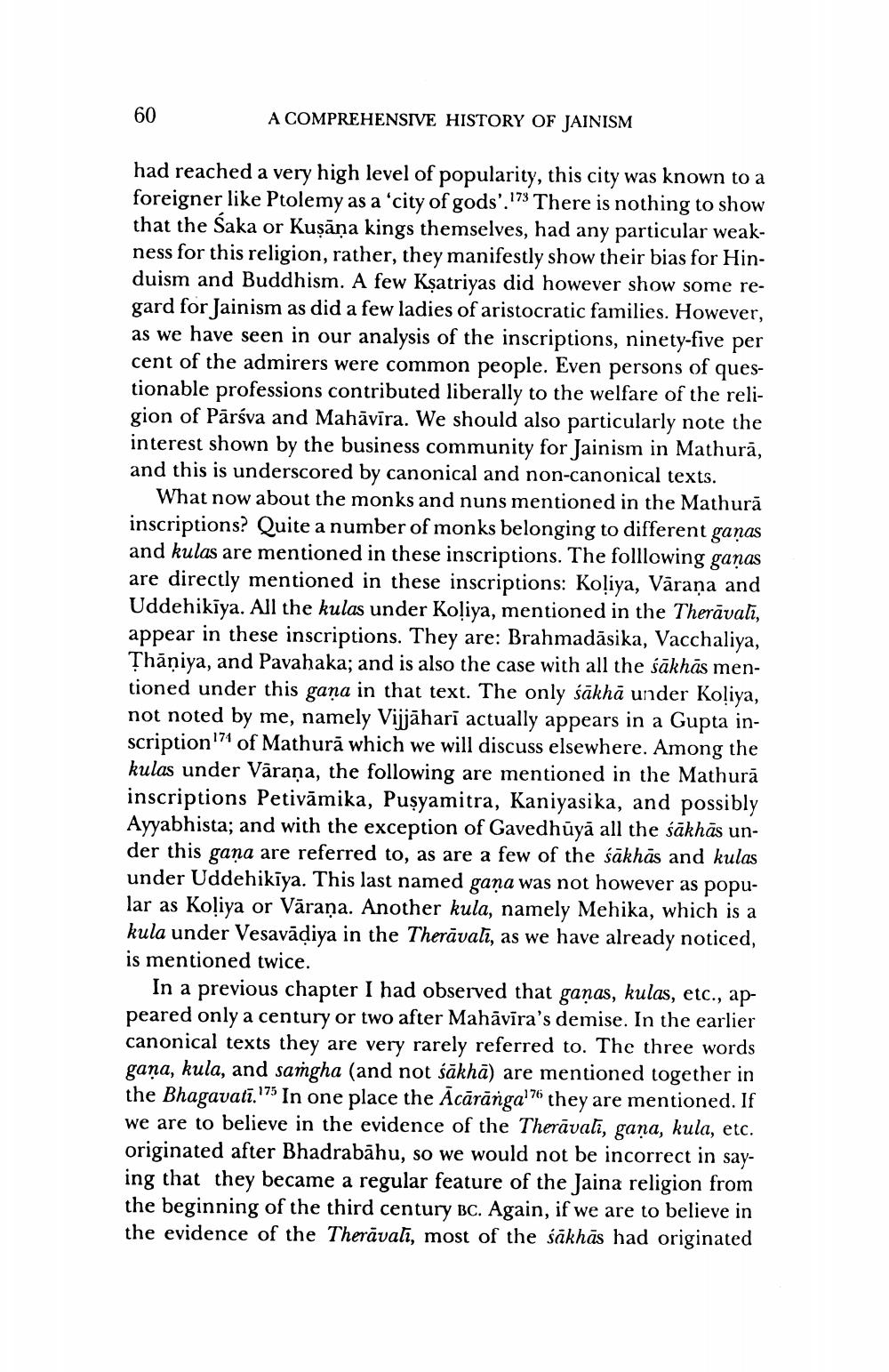________________
60
A COMPREHENSIVE HISTORY OF JAINISM
had reached a very high level of popularity, this city was known to a foreigner like Ptolemy as a 'city of gods'.173 There is nothing to show that the Saka or Kuşāņa kings themselves, had any particular weakness for this religion, rather, they manifestly show their bias for Hinduism and Buddhism. A few Ksatriyas did however show some regard for Jainism as did a few ladies of aristocratic families. However, as we have seen in our analysis of the inscriptions, ninety-five per cent of the admirers were common people. Even persons of questionable professions contributed liberally to the welfare of the religion of Pārśva and Mahāvīra. We should also particularly note the interest shown by the business community for Jainism in Mathurā, and this is underscored by canonical and non-canonical texts.
What now about the monks and nuns mentioned in the Mathurā inscriptions? Quite a number of monks belonging to different ganas and kulas are mentioned in these inscriptions. The folllowing gaņas are directly mentioned in these inscriptions: Koliya, Vāraṇa and Uddehikiya. All the kulas under Koliya, mentioned in the Therāvali, appear in these inscriptions. They are: Brahmadāsika, Vacchaliya, Thāniya, and Pavahaka; and is also the case with all the sākhās mentioned under this gana in that text. The only sākhā under Koliya, not noted by me, namely Vijjahari actually appears in a Gupta inscription 174 of Mathur, which we will discuss elsewhere. Among the kulas under Vārana, the following are mentioned in the Mathurā inscriptions Petivāmika, Puşyamitra, Kaniyasika, and possibly Ayyabhista; and with the exception of Gavedhūy, all the sākhās under this gana are referred to, as are a few of the sākhās and kulas under Uddehikiya. This last named gana was not however as popular as Koliya or Vāraṇa. Another kula, namely Mehika, which is a kula under Vesavādiya in the Therāvali, as we have already noticed, is mentioned twice.
In a previous chapter I had observed that gaņas, kulas, etc., appeared only a century or two after Mahāvīra's demise. In the earlier canonical texts they are very rarely referred to. The three words gana, kula, and samgha (and not sākhā) are mentioned together in the Bhagavatī.75 In one place the Acārānga 76 they are mentioned. If we are to believe in the evidence of the Therāvali, gana, kula, etc. originated after Bhadrabāhu, so we would not be incorrect in saying that they became a regular feature of the Jaina religion from the beginning of the third century BC. Again, if we are to believe in the evidence of the Therävalī, most of the sākhās had originated




